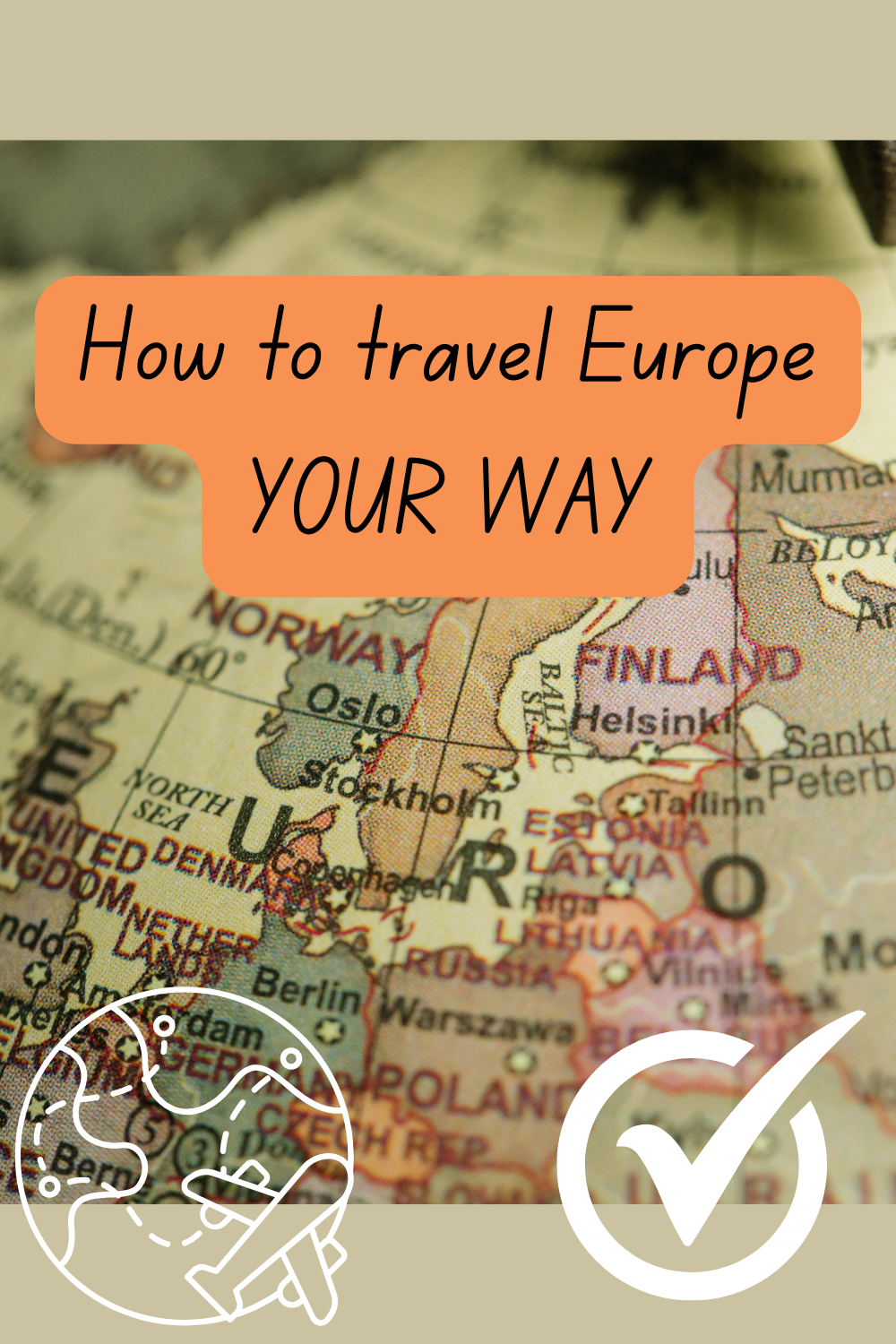We recognize that Disney vacations are not just an investment, but often the highlights of our lives, and we take that responsibility seriously. We want to ensure you have the best vacation experience.
Interested in a job in travel? Click here to learn: How to Become a Disney Travel Agent
Overview
Introduction

These days, Scotland's vibrant cities have become every bit as popular as its sweeping pastoral landscapes. Glasgow is an important center for architecture and design, and the annual Edinburgh International Festival, one of the largest in the world, gets bigger and zanier every year. The Scottish Parliament building at Holyrood, in Edinburgh, has given a grand home to the nation's devolved government. It is a fitting symbol of a country whose fiercely independent spirit and culture are as strong today as they have ever been.
Even with all that urban activity, Scotland has plenty of places to get away from it all. In the Highlands, one of Europe's wildest and least spoiled areas, you can walk for hours across misty moors and clamber up and down rocky slopes without seeing a soul. A shaggy Highland cow, a thread of smoke curling from a cottage chimney or a soaring golden eagle may add to the feeling of blissful solitude. And when you're ready for company, you'll find it at friendly pubs and inns, where traditional music—and in the Highlands and islands, Gaelic culture and language—thrive.
For all its air of wildness, rebellious history and moody weather, Scotland has a wonderfully cozy and warm side. The Scots (not Scotch—that's the drink, which Scots refer to as whisky) have a strong hospitable streak and a great sense of humor, which often comes washed down with a "wee dram" and an infectious toast of slainte mhath (good health).
Geography
Scotland's geography is varied, with everything from rolling moors and green valleys to rugged sea cliffs and epic mountain ranges. There is a firm geographic split called the Highland Boundary Fault, visible to the naked eye, between the Highlands and the Lowlands: The land suddenly rises in sweeping glens and shadowy mountains, and the urban centers become few and far between.
Industry is concentrated in the central belt of Scotland and around the main cities, especially Glasgow. On the Outer Hebrides, on the other hand, the modern world feels very far away indeed.
The coastline, which is cut by firths (similar to fjords), spreads for 11,186 mi/18,000 km and boasts more than 800 islands. The national symbol, the thistle, combines with evergreens and heather to enhance the countryside. Even bleak or barren landscapes are part of the beauty, and the wild North Atlantic weather only adds to the romance and drama of the scenery.
History
The Scots weren't always so welcoming to strangers. Early inhabitants, the Picts, held would-be conquerors at bay for a very long time—the usually aggressive Romans built Hadrian's Wall and the Antonine Wall to keep the Picts from invading Roman Britain. After the Romans departed, the Scots' stout character was nurtured during a period of fierce interclan rivalries and warfare before they faced an even more intractable foe: the English.
In the late 1200s, Edward I of England launched a bloody conquest of Scotland, touching off centuries of animosity occasionally punctuated by warfare. A nationalist army under Sir William Wallace had considerable success against Edward's army, and Robert the Bruce thoroughly trounced the English forces at Bannockburn in 1314. But it was 1320 before the Scots achieved independence, via a petition to the pope.
Conflicts revolving around issues of religion and succession flared, leading to an alliance with France and continuing battles with the English, who perceived the Scots' church and monarchy as threats. (Mary, Queen of Scots, was viewed as such a danger to the English crown that Elizabeth I had her executed.) In 1603, following the death of Elizabeth I, her first cousin twice removed, James VI, King of Scots acceded to the thrones of England and Ireland in what is known as the Union of Crowns. Scotland, however, continued as a sovereign state until the Acts of Union in 1707, when the Scots Parliament was dissolved.
But the battles weren't over. In 1715, supporters of James Stuart (The Old Pretender), the Catholic monarch who had been exiled to France, led the First Jacobite Rebellion, or "The Fifteen." This was a failure, but it was followed in 1745 by another attempt, this time led by James' son Charles Edward, known as "Bonnie Prince Charlie" or "The Young Pretender." This was a civil war and not a war of Scots against English.
The Jacobites' main aim was to restore the Stuart Dynasty to the thrones of Scotland, England and Ireland. It was not about creating a separate Scotland. There were English Jacobites who fought on the Stuart side, and in Scotland it was more of a north-south divide with the Catholic Highlands supporting the Stuarts and the Protestant Lowlands with the Crown. But even that is oversimplifying the matter, and there are many instances of families that split and fought on different sides.
The Scottish forces seemed poised for victory at first, marching as far south as Derby. But bad advice caused the army to retreat, and the government forces regrouped. They met on the wild and windswept Drummossie Moor at Culloden on 16 April 1746. It was the last battle to be fought on British soil, and the Jacobites were heavily defeated. In the aftermath, government forces massacred survivors, and the Act of Proscription forbade Highlanders from bearing arms or wearing the kilt or tartan, effectively dismantling the clan system.
In the late 18th and early 19th centuries, the Highland Clearances resulted in the wholesale eviction of communities from the Highlands to make way for sheep. Thousands emigrated to Canada, America and Australia, while the few who stayed found themselves resettled on crofts kept deliberately small so they would have to take on other work to survive. Feelings still run high today about the Clearances.
The Scots are a patriotic people and, after years of campaigning, achieved the return of the Stone of Destiny and the restoration of the Scottish Parliament. Already this separate legislature has produced reforms to education and the health service that are unmatched. An upsurge in support for the Scottish National Party saw it form a minority government in 2007.
In the next election of 2011, despite the voting system being designed to prevent it, the SNP returned with an outright majority. This enabled it to carry out one of its manifesto promises to hold a referendum on Scottish Independence. This took place on 18 September 2014 with the majority of votes against independence.
In a June 2016 referendum commonly known as Brexit, the U.K. voted by a slim margin to withdraw from the European Union. The most immediate effect of Brexit was a drop in value of the pound sterling; economic uncertainty is expected to continue for some time. The separation became official on 31 January 2020, and terms of the new trade deal went into effect on 1 January 2021.
Calls for a second referendum continue to be made, though it is unclear whether another vote will occur. Tensions remain high throughout the U.K., especially in Scotland, where the overwhelming majority voted against leaving the EU. The political landscape is fraught, making the role of the Scottish Parliament more important than ever.
Snapshot
Scotland offers magnificent scenery, historic sites, neolithic burial sites, fabulous seafood, lively pubs, Aberdeen Angus beef, Gaelic music and culture, hiking, castles, the Edinburgh Festival, pony trekking, golf, gardens, distillery tours, fishing, mountaineering, skiing, scuba diving and searches for the legendary Loch Ness monster.
Scotland has universal appeal: Almost everyone will find something they like about it. Only those who love constant warm, sunny weather won't be happy—it's often rather cool.
Potpourri
The Scots, who gave the world "Auld Lang Syne," celebrate New Year's Eve as Hogmanay or "Auld Year's Nicht." For many Scots, Hogmanay is more important than Christmas. To ensure the best luck in the year ahead, the "first foot" (literally the first person to step over the threshold after midnight) should be tall, dark and handsome, but if not dark, bearing a lump of coal is considered a worthy substitute.
Thanks to the pollution that streamed from its thousands of chimneys, Edinburgh was once known as "Auld Reekie."
The biggest soccer rivalry is in Glasgow, between the Celtic and Rangers football clubs.
You might notice people spitting on a patch of cobblestones outside St. Giles' Cathedral on Edinburgh's High Street. This is the Heart of Midlothian and marks the spot of the old tollbooth and jail.
Fortingall in Perthshire claims to be the birthplace of Pontius Pilate.
The world's first coal mines were begun in the Forth Valley in the 12th century.
West Lothian is the birthplace of world oil: James "Paraffin" Young first extracted shale oil there approximately 200 years ago. The legacy today is the deep red craters that dot the landscape to the west of Edinburgh.
Scotland has earned its reputation as a nation of inventors and pioneers. Scots invented penicillin, tarmac, the television, anesthetics, the steam engine, national parks, the telephone and Dolly, the world's first cloned sheep.


































